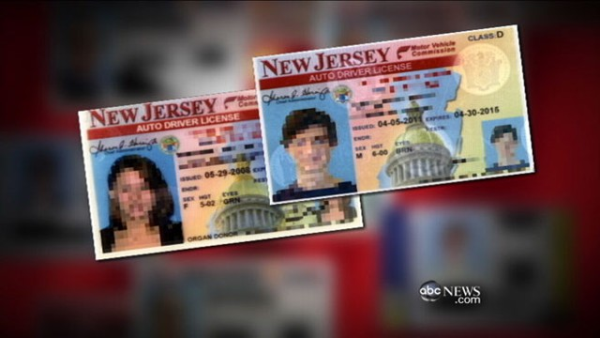In the past, fake ID’s have largely been associated with underage drinkers trying to get their hands on alcohol. But nowadays, fake ID’s have become so high-tech that they can be used for much more sinister purposes. For very little money, people can obtain fake ID’s online that trick most detection equipment. To make sure you aren’t falling victim to this new form of high-tech fraud, you need driver license authentication equipment that is able to protect your business.
Fake or Real? Can you tell the difference?

All over the country, police are uncovering the use of fake ID’s that have been obtained online through China. These can cost as little as $200 and can work not just to get underage people into bars, but people on the “No-Fly List” onto planes. They don’t just look and feel right, they have the hidden state seals that are only visible with black lights, one of the elements that is supposed to be non-replicable. The magnetic strip on the back can even be scanned and produce the same fraudulent information printed on the card.
It is a very serious problem that not just Homeland Security and the Transportation Security Administration are scrambling to solve, but commercial organizations too. Imagine companies that operate secure facilities who must be able to monitor and control the individuals accessing sensitive areas. Facilities of concern to Homeland Security include weapons manufacturing plants, chemical plants, refineries, aerospace companies, and even certain information technology companies. Private organizations also must be concerned with commercial espionage.
How can such facilities know whether the people attempting to obtain access are who they say they are?
Fortunately, there are some products that are currently being used by government agencies for border control and immigration purposes that are able to catch these well-made fakes. Advanced ID image capture and authentication equipment can be used to take high-resolution images of driver’s licenses and other forms of identification to perform very high-confidence authentication.
Most importantly, these products are now available for purchase by non-government organizations.
Two such products offered by FraudFighter are the B5000 and the ID-150. The ID-150 is a one-step scanning device that reads magnetic strip and barcode information, and also take pictures of the license under various light sources. It then compares the ID’s markings against a comprehensive database of driver’s licenses and ID cards from both the US, Mexico, Canada and a variety of other international ID’s to make sure everything is correct. It validates whether or not the ID is authentic as well as provides a risk factor measurement.
The B5000 crosschecks information found in the ID’s SmartChips with information on the document as well as in the machine-readable zone (MRZ). It also saves images of each document as well as the facial image from photo ID’s.
The use of this type of “image capture and authentication” equipment aids both Homeland Security and private commercial organizations in a number of ways.
-
First, at the heart of ID verification lays the practice of validating the identity documents presented by an individual. The ID150 and B5000 units perform this authentication with a level of sophistication unparalleled by anything else in the marketplace.
-
Second, the ability to store the information obtained from the authentication examination, such as identifying information, photo of the individual, and images of the ID itself allows any facility to maintain an archive of visitors, should it become necessary after an event to provide such information to law enforcement or other investigators. This data is maintained in an encrypted “FTC compliant” database.
-
Third, the data read from ID documents can be readily integrated with a variety of 3rd party databases (OFAC, No Fly, etc.) to conduct checks to see if the individual is red-flagged. This can be done without the possibility of data-entry errors that might occur if security staff is forced to hand-enter such data.
-
Finally, if desired, an organization – or an industry – can work to build a database of known offenders or high-risk individuals, and can share the data among each other so that facial recognition or other identifying software can alert security the fact that a high-risk individual is on-premise.
Fake ID’s have gone high-tech. In order to contend with this reality, the access control industry needs to respond in-kind, by taking their scrutiny to a higher technology level in order to counter-act the criminal and terrorist elements who make use of this new breed of false identity.


